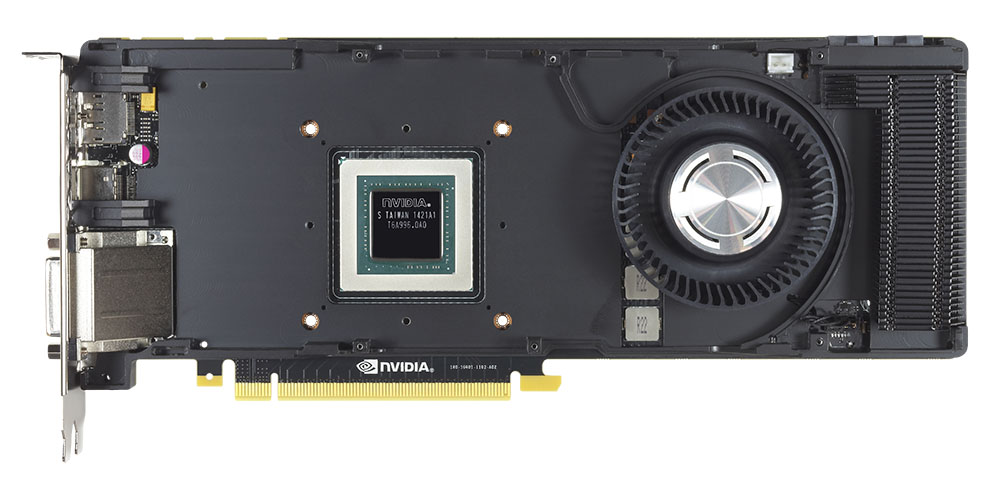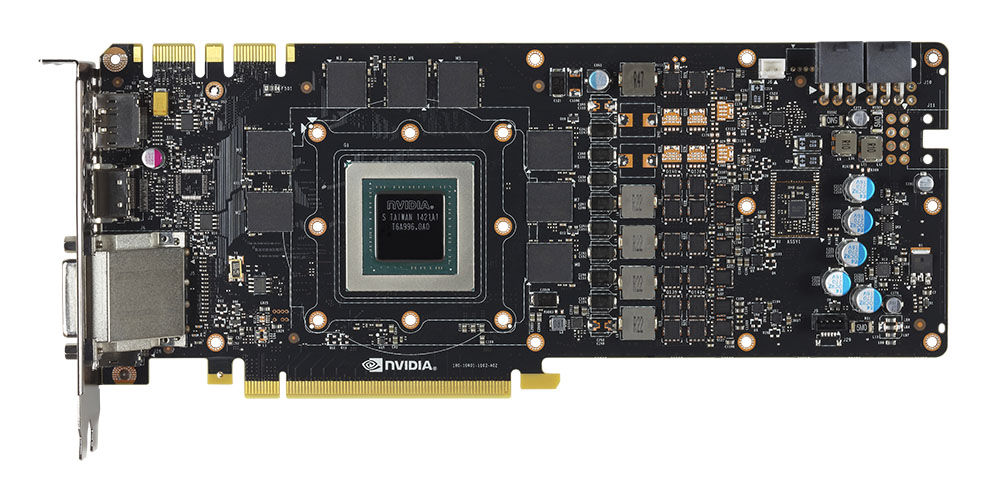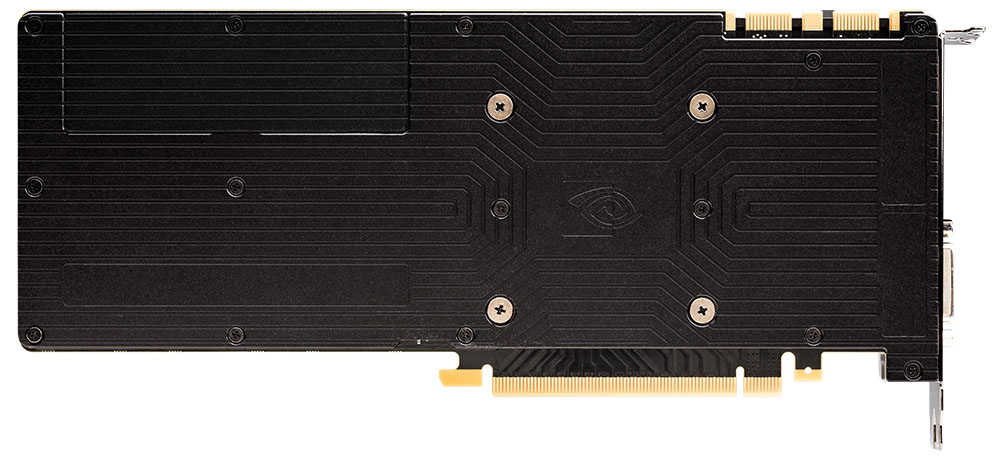The Reference Card
GeForce GTX 980's industrial design borrows heavily from the GTX 780(Ti) and Titan cards. This is no bad thing as that cooler is very well-built and looks good. A radial fan sits to the right of the GPU and blows air across the heatsink and out of the rear. It's not the best design as far as temperatures and noise are concerned - partners have improved upon it with custom coolers - but it provides a solid balance between aesthetics and performance.
Measuring 10.5in long and presented in the usual dual-slot form factor, there's really no need for a Titan-like heatsink on a GPU consuming 165W when operating at full chat. Should you keep temperatures in check, the core has the possibility of boosting higher than the 1,216MHz prescribed by Nvidia.
A frame/heatsink separates the cooler and copper insert from the rest of the card. Removing it shows the bare PCB that is modelled largely on the GTX 780 Ti-class of boards. Just like that GPU, Nvidia has reworked the power-delivery system such that the GPU can dynamically pull power from the two 6-pin connectors or PCIe lanes when overclocking, using the trio of sources to balance the juice coming in and ensuring that no one source is overloaded - a feature not present on other previous Nvidia cards or on the GeForce GTX 970. Four power phases feed the GM204 GPU and a fifth regulates the onboard GDDR5 memory.
Here's something new. The card-wide rear heatsink covers all but the two SLI fingers. Users planning on running three-way SLI or two cards close to each other are advised to remove the top-left section of the rear heatsink and expose the PCB. Removing this section significantly improves airflow between boards when the cards are directly adjacent to each other, according to Nvidia.
The 4GB framebuffer is contained wholly on the topside and surrounds the GPU. Partners needn't toe the reference line if they so wish, so we expect to see a varied number of overclocked designs featuring weird and wonderful coolers.
GTX 980's backplate takes a leaf out of the Titan Z playbook. Nvidia ships the reference card with five outputs though only four can be used concurrently. Upgrades include HDMI 2.0 for the first time on a consumer card, enabling 4K60 transfers. Flanked by a trio of DisplayPort 1.2 connectors and with a dual-link DVI thrown in for good measure, Nvidia says the redesigned IO section provides greater opportunity to exhaust hot air out of the chassis.
The NVENC video engine has been spruced-up for Maxwell, too. This video-processor block provides up to 2x faster encode and 8x faster decode than the one present in Kepler, along with a new decoder cache that reduces power consumption. Last but not least, Maxwell is also the recipient of a low-power state known as GC5, and its purpose is to minimise energy usage when the GPU is running basic tasks such as video playback.















